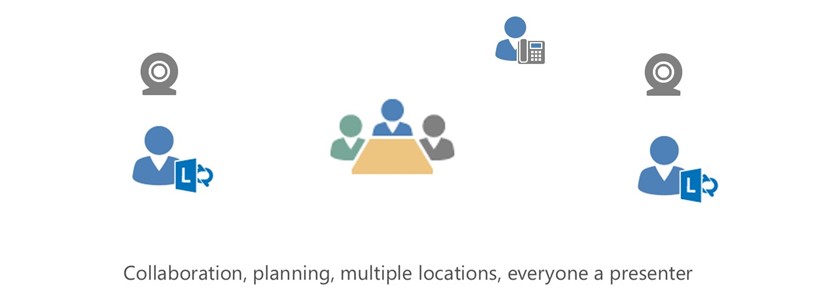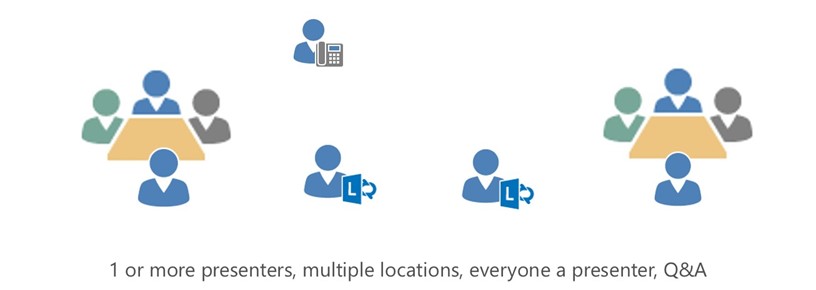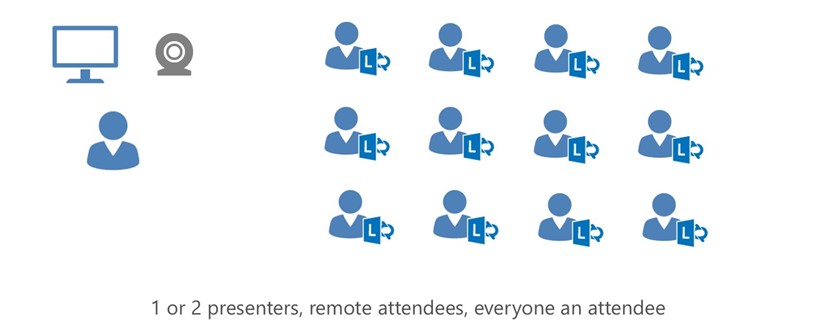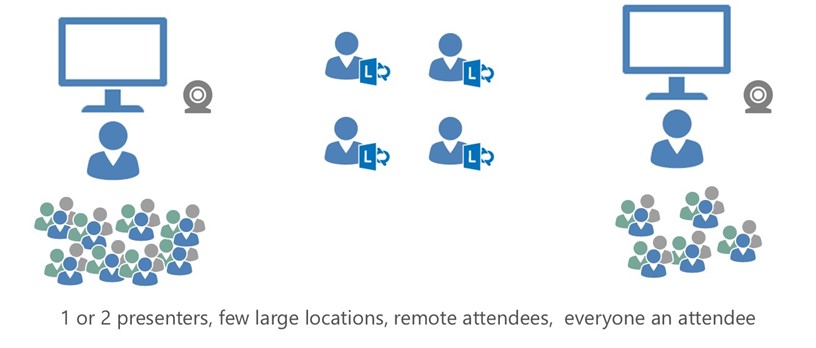Lync Meetings 1 – Introduction and Types of Meetings
In this series of blog posts I'll be discussing ways to run meetings effectively using Microsoft Lync 2013. Microsoft Lync is designed as a very easy to use collaboration tool with IM, Presence, Audio, Video and Content Sharing easily accessible. It is simple to hold impromptu meetings. With a bit of planning it is also possible to hold meetings with up to 1,000 participants (250 if using Lync Online as part of Microsoft Office 365). Let's explore the different types of meetings. I've classified meetings into four types:
Spontaneous

Spontaneous meetings are probably what most Lync users are used to. Spontaneous meetings can include two or more people at their computers equipped with Lync Certified WebCams and Audio devices and may also include remote attendees using their mobile devices (phones, tablets etc) and even people in a conference room using a conferencing device such as the PolyCom CX5000 "Roundtable".
Team Meetings

Team meetings will normally be held in one or more conference rooms. The power of Microsoft Lync allows people to attend the meetings from their remote offices or home and even to attend the meetings using their mobile devices. This type meeting might be more structured with defined agendas and presenters and so may need more planning.
1 To Many Training

Here, most people will attend the session remotely via Lync. The presenter will either be in an office or training center or will be in a room with a few in-person attendees. Most attendees will join via Microsoft Lync and view the presentation and ask questions during the Q&A time. Microsoft Lync is very capable of running a session such as this, but some planning is needed to ensure a successful session.
All-Hands/Town Hall

All-Hands/Town Hall meetings are the most complex type of meeting. There will be at least one large meeting room with many in-person attendees and one or more live presenters. There may also be other large meeting rooms and many remote attendees all connected via Microsoft Lync. Presenters are not limited to presenting in the main location, but using the power of Microsoft Lync presenters can speak and share content from any location. This type of meeting requires the most planning.
To put it another way…
To put it another way, meetings can be grouped into Spontaneous meetings (unplanned, one to one, multiparty sharing content etc) or Planned and Scheduled (Team Meetings, Training and All-Hands/Town Hall). Spontaneous meetings require very little planning, but there are still some best practices that I will share. Planned and Scheduled meetings require more forethought and planning and I will cover our in-house experiences and best practices gained over a number of years running these meetings.
Please read on and expect to see many more posts over the next few weeks/months.
Mike Jorden